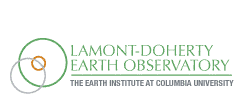NSF Program Announcement Research Activities MARGINS-NSF Awards Event Response Policy Data Policy Data Server Post-Doctoral Fellowships Related Websites
|
||||||||||||||||||||
Seismic and Geologic Study of
Gulf of California Rifting and MagmatismPrincipal Investigators:
D. Lizarralde Georgia Institute of Technology (GIT)
G.J. Axen University of California, Los Angeles (UCLA)
J.M. Fletcher and Centro de Investigacíon Científica y de Educación
A. González-Fernández Superior de Ensenada (CICESE)
A.J. Harding and G.M. Kent Scripps Institute of Oceanography (SIO)
W.S. Holbrook University of Wyoming (UW)
P.J. Umhoefer Northern Arizona University (NAU)Project Summary
Rifting of continental lithosphere is a fundamental process in the growth and evolution of continents, and it is one that has substantial societal relevance by virtue of the global petroleum reserves accumulated within rift basins. Yet we lack a full understanding of both the magnitude and cause of the stresses that drive rifting, the deformational mechanisms of extension, and the key parameters that control this deformation. Basic questions persist about the style of lithospheric extension as to whether it deforms symmetrically in pure shear or asymmetrically in simple shear; about the roles of lower-crustal flow, magmatism and sedimentation in evolving rift architecture; and about the sensitivity of rift evolution to variations in key parameters such as lithospheric strength and temperature, strain rate, and crustal thickness. Answering these and other questions is a fundamental goal of the Rupturing Continental Lithosphere (RCL) initiative of NSF's MARGINS program, and the Gulf of California has been selected as one of two focus sites for this initiative. The Gulf is particularly well suited to a large-scale study of rift processes, because it is actively rifting, contains clear rift segments that will enable reconstruction of the entire rift-drift history across unambiguous conjugate margins, has a reasonably well understood geologic and tectonic history, shows along-strike variations in extensional style, and is logistically accessible. Because of these characteristics, complete delineation of deformational patterns along the Gulf of California rift should provide fundamental new insights into the processes of lithospheric rupture.
We propose a seismic experiment and structural geology program that will delineate the geometries and patterns of crustal extension and rift magmatism along three main conjugate-margin transects across the Alarc--n, Guaymas, and Delf'n Basins, and an east-west profile across the Wagner basin. Each of these basins exhibits a different rift morphology, reflecting the along-axis variation that exists within the Gulf. In the south, strain localized in the Alarc--n Basin early on, initiating seafloor spreading; most extensional deformation here is below sea-level and the spreading center is lightly sedimented. In the north, extension in Delf'n Basin has not achieved seafloor spreading, much of the extensional deformation is subaerial, including a potentially active low-angle detachment fault to the west, and the active rift is heavily sedimented. The Wagner Basin transect is designed to image this low-angle detachment fault at depth. The Guaymas Basin, in the center of the gulf, has distinct spreading-center grabens overlain by significant sediment that is intruded by spreading-center magmas. These profiles will represent the first crustal-scale transects across truly conjugate rifted continental margins and together will provide the framework for understanding an entire rift system and for characterizing along-strike changes in crustal architecture and rift processes related to differences in key parameters, such as crustal thickness, lithospheric strength, and sediment input.
Our scientific objectives follow from the broad goals of the MARGINS RCL Science Plan and aim to address basic questions about how rifts behave as mechanical systems, how rift architecture evolves during extension, and what processes are important in the transition from rifting to initial seafloor spreading. Our specific objectives aim to:
- Determine the spatial and temporal partitioning of strain across the full width and throughout the entire history of the rift along four main transects from north to south in the Gulf of California.
- Determine the volume and emplacement style of rift magmatism and assess its role in strain localization.
- Relate along-axis differences in extensional style to possible controlling factors, such as the rheology of continental lithosphere, magmatic input, and sedimentation.
- Assess the influence of sedimentation on deformation, subsidence, magmatic processes, and the formation of "transitional" crust.
These objectives will be met through a linked seismological and geological study, where seismic images of crustal thinning patterns, deformation features (faults and folds), stratigraphic patterns, crustal velocity structure, and ductile strain fabric in the lower crust will constrain deformation offshore and beneath the margins, and where onshore extension will be quantified through geologic measurements of fault orientation, slip, and the age of deformation. These data will enable us to reconstruct the tectonic, sedimentary, and magmatic histories of the rift from initiation to seafloor spreading and will establish an observational framework of crustal architecture that will both address our scientific objectives and form a basis for anticipated future work in this MARGINS focus site.


